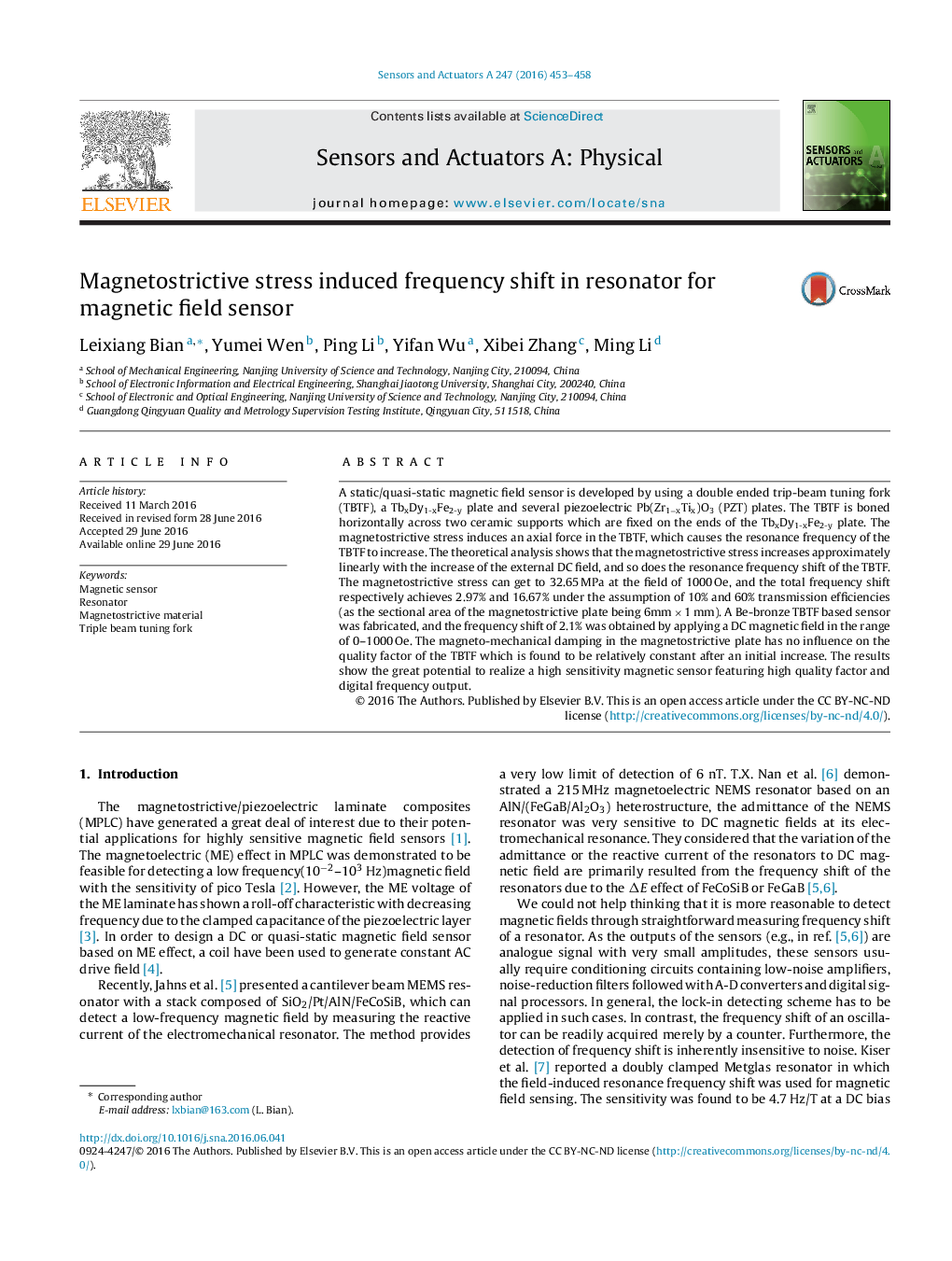| Article ID | Journal | Published Year | Pages | File Type |
|---|---|---|---|---|
| 7134513 | Sensors and Actuators A: Physical | 2016 | 6 Pages |
Abstract
A static/quasi-static magnetic field sensor is developed by using a double ended trip-beam tuning fork (TBTF), a TbxDy1-xFe2-y plate and several piezoelectric Pb(Zr1âxTix)O3 (PZT) plates. The TBTF is boned horizontally across two ceramic supports which are fixed on the ends of the TbxDy1-xFe2-y plate. The magnetostrictive stress induces an axial force in the TBTF, which causes the resonance frequency of the TBTF to increase. The theoretical analysis shows that the magnetostrictive stress increases approximately linearly with the increase of the external DC field, and so does the resonance frequency shift of the TBTF. The magnetostrictive stress can get to 32.65 MPa at the field of 1000 Oe, and the total frequency shift respectively achieves 2.97% and 16.67% under the assumption of 10% and 60% transmission efficiencies (as the sectional area of the magnetostrictive plate being 6mm Ã 1 mm). A Be-bronze TBTF based sensor was fabricated, and the frequency shift of 2.1% was obtained by applying a DC magnetic field in the range of 0-1000 Oe. The magneto-mechanical damping in the magnetostrictive plate has no influence on the quality factor of the TBTF which is found to be relatively constant after an initial increase. The results show the great potential to realize a high sensitivity magnetic sensor featuring high quality factor and digital frequency output.
Related Topics
Physical Sciences and Engineering
Chemistry
Electrochemistry
Authors
Leixiang Bian, Yumei Wen, Ping Li, Yifan Wu, Xibei Zhang, Ming Li,
